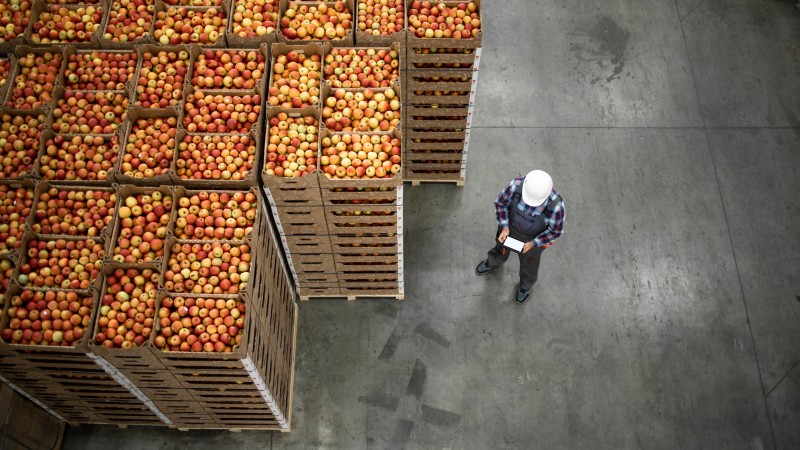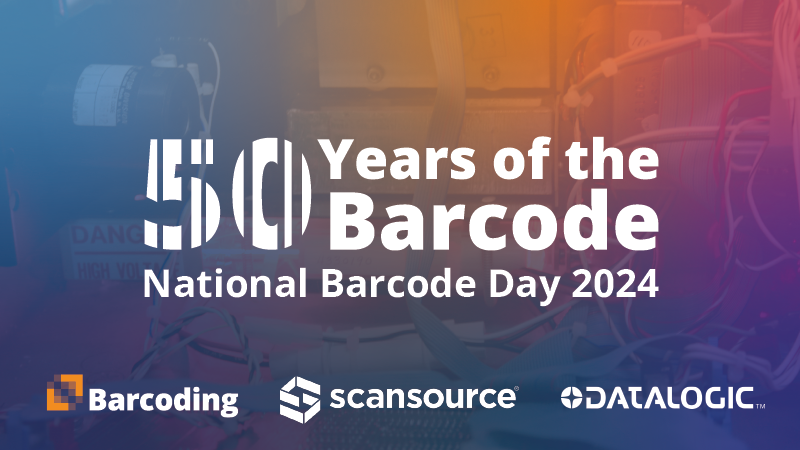The FDA’s new Food Safety and Modernization Act Section 204 final rules are due for publication in November and expected to go into effect in January of 2023.
Companies subject to regulation will have two years to become fully compliant.
The new rules are intended to improve the safety of the U.S. food supply and shift regulators’ focus from contamination event response to more effective prevention.
Getting fast access to near-real-time data and full tracking and traceability from origin to the final customer brings a new level of transparency to food safety, and makes data capture an urgent focus.
But it turns out that RAIN RFID, barcode labels, and other supply chain data capture technologies are helping businesses all across the food supply chain do much more than strengthen their food safety record-keeping programs.
Where are they capitalizing on more accurate and up-to-date information? Find out — listen in on the conversation between Barcoding’s Director of IoT, JW Franz, and John Wirthlin, Zebra’s Industry Principal – Manufacturing, Transportation & Logistics.
About Zebra Technologies
Zebra empowers organizations to thrive in the on-demand economy by making every front-line worker and asset at the edge visible, connected and fully optimized. Zebra serves customers with an award-winning portfolio of hardware, software, services, and solutions that digitize and automate workflows.
A Little More on FSMA 204
It hasn’t been released yet, but a good amount is known about changes that are coming. Section 204 requires the FDA to establish a Food Traceability List (FTL), a roster of foods for which growers, shippers, packers, processors, manufacturers, and sellers need to keep strict, detailed records.
The FDA has defined Key Data Elements (KDEs) that need to be captured as products on the FTL move through supply chain milestones known as Critical Tracking Events (CTEs). A few KDE examples include:
- Pick date
- Catch date
- Expiration date
- Lot number
The FDA will require records to be maintained as original paper records, electronic records, or true copies, and companies will need to provide traceability records to the FDA no more than 24 hours after a request (such as for a recall or outbreak of food-borne illness). That data needs to be provided in a sortable, electronic spreadsheet.
For larger businesses that still rely on paper, pen, and clipboard, the new rules add one more factor to a growing list of reasons to investigate data capture solutions.
Is the Food Supply Chain Experiencing its Own Walmart Effect?
Use of RAIN RFID (radio frequency identification) and other IoT-connected technologies is proliferating across the retail supply chain, in part due to big box retailers, including Walmart, requiring suppliers to apply RFID tags or labels to an ever-expanding list of products.
What began with a focus on inventory management demonstrates benefits across operations, including distribution centers and logistics, ecommerce fulfillment and more. As benefits prove out at giant retailers, RAIN RFID’s use also ripples out, becoming more widespread within the operations of suppliers required to apply the tags to their products.
Businesses like groceries and restaurants have the potential to see similarly widespread advantages, using RAIN RFID to quickly and efficiently capture key data and enabling items to be associated with a case or container and tracked, for example, to a quick-serve restaurant (QSR) that prepares and serves the product to its patrons.
The food-tracing capability, particularly for products like leafy greens, fish, dairy, and eggs, can help speed responses to outbreaks or recalls. But the benefit can also expand to daily operations, managing inventory and expiration dates to reduce perishable food waste and minimize production costs.
That’s not all; labor shortages are forcing restaurants to find ways to get more work done with fewer employees. That’s where RFID and automation can shave labor off menial tasks like shipment verification. Rather than require workers to manually inspect, count, verify conditions and check in items, beacons or fixed sensors in storage areas can capture data from RAIN RFID tagged products and update records. Shaving hours off back-of-the-house tasks can make a substantial difference in a business that relies on human workers to deliver a positive customer experience.
GS1 and EPCIS 2.0
GS1’s EPCIS Standard is a critical factor in the success of traceability developments. The release of EPCIS 2.0 in 2022 made more room for sensor-based data such as temperature and humidity readings to be included and tracked as items move through the supply chain.
That’s where RAIN RFID and serialization make track-and-trace capabilities even more valuable: it’s possible to instantly identify when an item has been out of required storage and handling conditions. Products can be immediately quarantined and investigated, enabling more prevention of food-borne illness.
And it’s the GS1 EPCIS standard that establishes the shared language, so all parties from farm to fork can understand one another and benefit from accurate, precise data records.
Does this Mean RFID is for Everyone?
You might think a technology provider like Zebra would press for it, but John explains that the decision should be data-driven, too. Whether or not an investment in IoT-connected sensors and RFID is right depends on multiple factors, including the size of the operation, the amount of data needed, and the level of complexity the business has to navigate.
He says Zebra works with customers at a strategic level, helping them evaluate their present state and ideal state, and determine what technologies can help them build the bridge. But it’s channel partners like Barcoding that bring in the systems integration expertise and hands-on experience to make all work.
John recommends, wherever possible, to get multiple supply chain partners in the room together, to help them all see upstream and downstream more clearly and work collaboratively, to create systems that serve everyone’s needs.
In the past, John says, data solutions were solely the realm of IT. Now, as information needs proliferate and data becomes more valuable, higher-level operational leaders are driving modernization around IoT and RFID integration.
What Lies Ahead for RAIN RFID & IoT?
Impending regulatory changes will open many new opportunities for supply chain partners to work collaboratively. Businesses that want to start taking advantage of RFID’s data capture possibilities should start with a candid conversation with an expert — so their technology providers can get a clear vision of workflows, processes, and people’s needs. This approach, after all, is what differentiates a strategic technology partner from someone who’s just out to sell a product.
Download our free guide to learn more about the many ways RFID has impacted the supply chain. Click the link below to claim your copy.







